Karate is more than just a physical discipline; it is a philosophy, a way of life, and a martial art with a rich history shaped by the incredible vision of its early pioneers. While millions of people around the world now practice this art, its modern form is a direct result of the dedication and genius of a select few masters. These individuals not only preserved ancient techniques but also innovated, systematized, and spread the art of karate from its Okinawan roots to a global audience.
They were not just teachers but also thinkers who understood that true martial arts training was about building character, discipline, and a strong moral foundation. This definitive list of the Top 10 Karate Masters is a tribute to the men who laid the groundwork for what we know today as modern karate.
The journey of karate from a secretive Okinawan fighting system to a worldwide phenomenon with over 100 million practitioners is a story of incredible perseverance. The masters on this list faced immense challenges, from social skepticism to the devastating effects of war, yet they never wavered in their mission. Each of them brought a unique perspective, whether through the emphasis on hard, powerful strikes, circular, soft movements, or the integration of mind and body.
This guide is a deep dive into the lives and legacies of these figures, explaining why they are considered the true architects of modern karate. This comprehensive look at the world of these pioneers is why this is the ultimate guide to the Top 10 Karate Masters.
10. Tatsuo Shimabuku
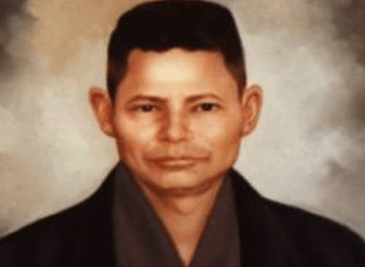
Tatsuo Shimabuku was a prominent Okinawan master known for creating the Isshin-ryu style of karate, a synthesis of several major disciplines. Born in 1908, he was a master of both Shorin-ryu and Goju-ryu, as well as a skilled practitioner of Okinawan weaponry (kobudo). Shimabuku’s goal was to create a new, more practical form of karate that integrated the best of both hard and soft styles. His dedication to this vision is why he is rightfully considered one of the Top 10 Karate Masters.
Isshin-ryu, which translates to “One Heart Style,” was officially founded in 1956 and is one of the most popular styles practiced in the United States today. Shimabuku’s innovative approach included a new style of vertical punch, which he believed was more efficient and less prone to injury. He also introduced a unique set of kata that synthesized the principles of his two primary influences. His willingness to break with tradition and forge a new path solidified his place among the Top 10 Karate Masters.
| Stat | Isshin-ryu is one of the most widely practiced styles of Okinawan karate in North America, with a significant following primarily due to Shimabuku’s connections with U.S. Marines stationed in Okinawa during the post-WWII era. |
9. Shigeru Egami
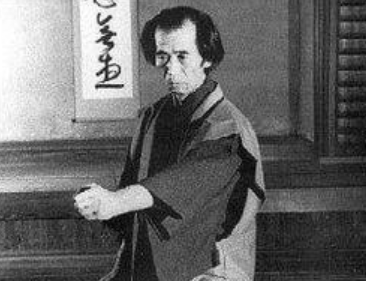
Shigeru Egami was a direct student of Gichin Funakoshi and a key figure in the development of Shotokan karate, although he later moved away from its competitive, sports-oriented direction. Born in 1912, he was a central figure in the early spread of karate to mainland Japan and a founding member of the Japan Karate Association (JKA). After Funakoshi’s death, Egami became disillusioned with what he saw as the commercialization of the art, and he began to reform his own training methods, believing true mastery lay in non-contact, spiritual practice. This philosophical shift is why he is on our list of the Top 10 Karate Masters.
Egami believed that karate should not be used as a combat sport but as a way of personal and spiritual development. He refined his techniques to be more fluid and natural, emphasizing the concept of “unconscious” movements and the power of the mind-body connection. His ideas were foundational to the Shotokai organization, which continues to promote his vision of non-competitive karate. His influence, though subtle, was profound, making him one of the most important of the Top 10 Karate Masters.
| Stat | Shigeru Egami famously authored the book The Heart of Karate-Do, which outlines his philosophical approach and is a revered text among practitioners of non-competitive karate. |
8. Hironori Ōtsuka
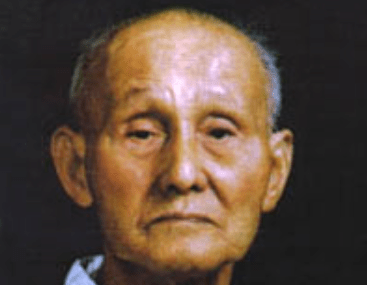
Hironori Ōtsuka was a highly skilled martial artist who combined his deep knowledge of Japanese jujutsu with Okinawan karate to create a new style. Born in 1892, he began his training in jujutsu at a young age, eventually earning the rank of menkyo kaiden, or master’s license. After meeting Gichin Funakoshi, he became one of his most dedicated students but eventually sought to create a style that merged the linear movements of karate with the joint locks and throws of his jujutsu background. This innovation is why he is one of the Top 10 Karate Masters.
The style he created, Wadō-ryū, which means “Way of Harmony,” emphasizes principles of evasion, redirection, and circular motion over brute force. Ōtsuka believed that a martial artist should be able to flow with an opponent’s attack, rather than meet it with a rigid block. His philosophy and practical approach made Wadō-ryū one of the four major styles of Japanese karate. His work stands as a testament to his genius, securing his place among the Top 10 Karate Masters.
| Stat | In 1972, Hironori Ōtsuka was the first karate practitioner to receive the title of Meijin (Master) from the International Martial Arts Federation, a recognition of his unparalleled contribution. |
7. Gōgen Yamaguchi
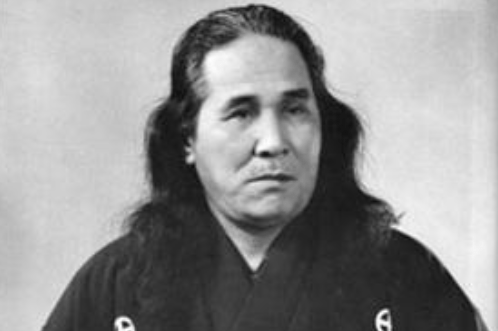
Gōgen Yamaguchi, known as “The Cat” for his graceful movements, was one of the most influential figures in the global spread of Gōjū-ryū karate. Born in 1909, he was a student of the legendary Chojun Miyagi and was instrumental in introducing Gōjū-ryū to mainland Japan. His efforts to spread the art were so successful that he founded the All-Japan Karate-dō Goju-kai, one of the largest Gōjū-ryū organizations in the world. His dedication and passion for the art solidified his place among the Top 10 Karate Masters.
Yamaguchi was a dynamic and charismatic figure who helped modernize Gōjū-ryū by adapting it for a wider audience. He developed a free-sparring system and a set of new kata, or forms, that became a staple of the style. He also introduced a more spiritual and meditative dimension to his training, earning him the nickname “The Cat.” His tireless work to popularize Gōjū-ryū is why he is a crucial entry on our list of the Top 10 Karate Masters.
| Stat | Gōgen Yamaguchi was one of the first Japanese masters to introduce the practice of meditation and breathing exercises as a formal part of karate training. |
See More:
6. Kenwa Mabuni
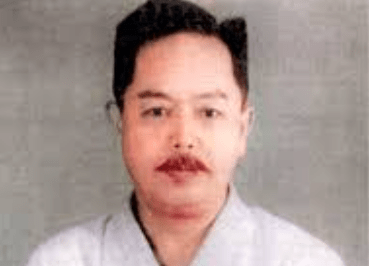
Kenwa Mabuni was a prolific and highly respected master who founded the Shito-ryu style of karate. Born in 1889 in Okinawa, he was a student of both Anko Itosu and Kanryo Higaonna, the two most influential masters of the time. Mabuni was known for his encyclopedic knowledge of kata and his ability to synthesize the best of both the Shuri-te and Naha-te traditions. His dedication to preserving a vast number of forms is why he is one of the Top 10 Karate Masters.
He meticulously studied both hard and soft styles, weaving their principles together into a fluid and comprehensive system. This commitment to combining diverse lineages made Shito-ryu a unique and highly effective martial art. Mabuni’s influence continues to be felt today, with his style being one of the most widely practiced worldwide.
Shito-ryu, named after the first characters of his two teachers’ names (Itosu and Higaonna), is a style known for its extensive curriculum and wide range of techniques. Mabuni believed that a true master should be knowledgeable in all aspects of karate, from hard-hitting strikes to soft, circular blocks. His commitment to preserving and teaching a wide range of techniques and forms is what makes him a truly exceptional figure in karate history. He is a key entry on our list of the Top 10 Karate Masters.
| Stat | Kenwa Mabuni is said to have mastered and taught more than 50 different kata, far more than any other founder of a major karate style. |
5. Masatoshi Nakayama
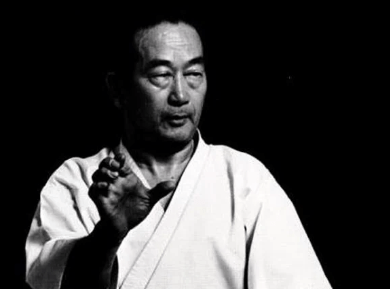
Masatoshi Nakayama was a prominent student of Gichin Funakoshi and the first Chief Instructor of the Japan Karate Association (JKA). Born in 1913, he played a crucial role in modernizing Shotokan karate, making it a globally recognized sport. Nakayama was instrumental in establishing the JKA’s instructor training program, which produced many of the world’s most renowned karate masters. His organizational genius and dedication to the scientific study of karate are why he is one of the Top 10 Karate Masters.
Nakayama believed that karate needed to be studied scientifically to be truly effective. He introduced the concept of free sparring and developed a systematic approach to teaching and training. His efforts transformed Shotokan from a traditional art into a disciplined sport, making it more accessible to a global audience. His work on the JKA is a testament to his vision and his commitment to the art. His efforts to formalize the training curriculum make him one of the most important of the Top 10 Karate Masters.
| Stat | Masatoshi Nakayama authored the influential book series Best Karate, which is considered a foundational text for Shotokan practitioners worldwide. |
4. Anko Itosu
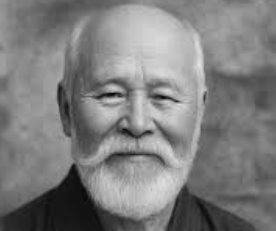
Anko Itosu is a towering figure in karate history, widely regarded as the “Grandfather of Modern Karate.” Born in 1831, he was a student of the legendary Sokon Matsumura and a master of Shuri-te. Itosu was the first person to introduce karate into the Okinawan public school system, a monumental step that moved the art from a secretive practice to a widespread discipline. His dedication to the art is why he is rightfully considered one of the Top 10 Karate Masters.
Itosu’s most significant contribution was the creation of the Pinan kata (known as Heian in Japanese), a series of five forms designed to be easy for young students to learn. These forms are now a staple of virtually every modern karate style. Itosu’s efforts to simplify and systematize the art made it more accessible to the masses and paved the way for its global expansion. His vision and foresight were essential to the art’s survival and evolution, making him one of the most influential of the Top 10 Karate Masters.
| Stat | Anko Itosu famously wrote the “Ten Precepts of Karate,” a foundational text that outlines the moral and philosophical principles of the art. |
3. Chōjun Miyagi
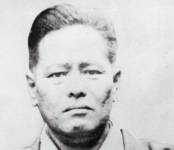
Chōjun Miyagi was a master who founded the Gōjū-ryū style of karate. Born in 1888, he was a student of the legendary Kanryo Higaonna and was instrumental in introducing karate to mainland Japan. Miyagi was known for his philosophical and spiritual approach to the art, which he believed was a path to personal and spiritual development. His dedication to this vision is why he is rightfully considered one of the Top 10 Karate Masters.
Miyagi’s efforts led to karate being officially recognized by the Japanese government, a monumental step for the art.
Miyagi’s Gōjū-ryū, which means “Hard-Soft Style,” is a unique blend of powerful linear movements and fluid, circular techniques. He emphasized the importance of breathing and the use of both hard and soft techniques in combat. Miyagi’s efforts to systematize the art and his philosophical approach were instrumental in its global expansion. His commitment to the spiritual and philosophical dimensions of karate is what makes him a truly exceptional figure in karate history. He is a key entry on our list of the Top 10 Karate Masters.
| Stat | Chōjun Miyagi was the first Okinawan master to receive formal recognition from the Dai Nippon Butoku Kai, Japan’s highest martial arts governing body. |
2. Masutatsu Oyama
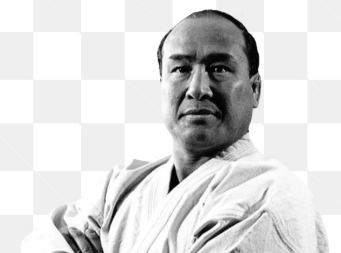
Masutatsu “Mas” Oyama was a legendary figure who founded Kyokushin karate, a full-contact style that revolutionized the martial arts world. Born in 1923, Oyama was a master of various martial arts, including Shotokan and Goju-ryu. He was known for his incredible physical feats, including fighting bulls with his bare hands and completing a 100-man kumite (a hundred consecutive fights). His dedication to the art and his willingness to push the boundaries of human endurance are what make him one of the Top 10 Karate Masters.
Oyama believed that traditional karate had become too focused on form and lacked the practical application of real combat. He created Kyokushin, which means “Ultimate Truth,” to be a rigorous and disciplined style that emphasized full-contact sparring. His efforts to promote the art led to its global expansion and the establishment of a worldwide organization. His influence on the martial arts world is undeniable, making him one of the most important of the Top 10 Karate Masters.
| Stat | Mas Oyama completed the 100-man kumite three times in a row over the course of three days, a feat that has never been surpassed. |
1. Gichin Funakoshi

Gichin Funakoshi is the most revered and influential figure in modern karate, widely considered the “Father of Modern Karate.” Born in 1868, he was a student of both Anko Asato and Anko Itosu, the two most influential masters of the time. Funakoshi was instrumental in introducing karate to mainland Japan in 1922, a move that would lead to the art’s global expansion. His dedication to the art and his philosophical approach are what make him the number one entry on our list of the Top 10 Karate Masters.
Funakoshi’s Shotokan style is the most widely practiced in the world, and it is a testament to his vision and his commitment to the art. He famously changed the Japanese character for karate from “China Hand” to “Empty Hand,” a philosophical shift that emphasized the art’s spiritual and intellectual dimensions. Funakoshi’s work in systematizing the art and his twenty precepts, which emphasize the importance of character, respect, and humility, have become the foundation of modern karate. His tireless work to promote karate is what makes him the most important of the Top 10 Karate Masters.
| Stat | Gichin Funakoshi’s 1922 public demonstration in Tokyo is widely considered the single most important event in the history of karate, as it introduced the art to the world. |
FAQs:
Q1: What is a master in karate?
A1: A master in karate is a practitioner who has achieved a high level of technical proficiency, a deep understanding of the art’s philosophy, and a proven ability to teach and inspire others, as demonstrated by the Top 10 Karate Masters on this list.
Q2: Who is considered the “Father of Modern Karate?”
A2: Gichin Funakoshi is widely considered the “Father of Modern Karate” for his instrumental role in introducing and popularizing the art in mainland Japan, a key reason why he is the number one entry on our list of Top 10 Karate Masters.
Q3: What is the difference between a master and a sensei?
A3: While “sensei” is a Japanese term for “teacher,” a “master” is a more profound title given to a select few who have made significant contributions to the art and its global spread, such as the Top 10 Karate Masters on this list.
Read More :



